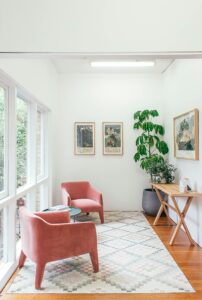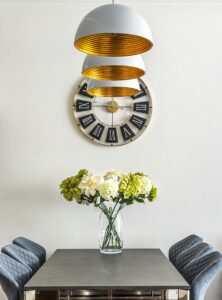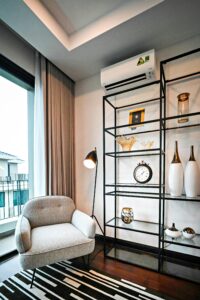FACT. The ageing population (over 65) in the UK is growing rapidly, rising from 18 per cent in 2018 to a projected 25 per cent by 2050.
Astute landlords are seeing the rise in the ageing population as an opportunity to create homes that cater to the expanding market. Making a property suitable for older tenants doesn’t mean sacrificing style or appeal either. In fact, focusing on age-inclusive design makes a home beautiful and functional, without feeling clinical or overly-adapted. So, how can you renovate your property to support ageing whilst maintaining its good looks and kerb appeal?
It’s all about age-inclusive design, not ‘adaptations’
Nowadays, older adults have a preference for homes that support their independence without feeling or looking like a care facility. Instead of traditional adaptations, there is a move towards smart design choices that work for everyone.
A home should always feel like a home, and the key is balancing function with aesthetics. To avoid the ‘institutional’ look, choose stylish, timeless interiors to create a warm, inviting design that will encourage a sense of pride in ownership, and will help tenants to make your property a place to call home regardless of age.
Here are some ways to incorporate subtle but significant changes to your property that will appeal to an ageing population.

Enhance comfort and practical living
A home should be as easy to live in as it is stylish. Small changes will improve comfort for ageing tenants.
- Larger windows allow more natural light to flood in improving mood and wellbeing. Equally as important, as we age, our eyesight degenerates and sometimes with it comes macular degeneration that can blur the central vision. With poor eyesight, you need more light to see and to read so living in lighter properties makes life easier.
- Wet rooms Stylish and practical, they make showering easier and safer. They are usually bigger and more accessible than over-the-bath showers and raised shower bases so are a great solution for anyone suffering from mobility issues.
- Raised garden beds They increase the enjoyment of outdoor space and without excessive bending, gardening is easier. Substituting grass for astroturf also reduces gardening maintenance. With some very convincing astroturfs around, you may be pushed to spot the difference between them and the real deal.
- Chairs with good, sturdy arms Armchairs are really important because as you get older it’s much harder to get up and down out of your comfortable seats so having arms means you can actually put your hands on them and push yourself up.
- Thoughtful storage solutions Handles on cupboards in kitchens, bathrooms, and bedrooms are easier to open and make everyday tasks simpler. Age-related diseases like dementia can confuse and being unable to see what’s behind a cupboard can heighten anxiety. Glass cabinets and open-fronted storage in kitchens and bedrooms are also helpful. Knowing what’s behind a door and a glass cabinet for glassware in the kitchen, for example, helps to reduce confusion.
- Flexible space for activities Keeping fitter for longer is only a good thing and making exercise at home possible by creating room for yoga or light exercise is beneficial. Or, having space to entertain friends and family, and to stay, is a game changer for older people living alone.


Improve sensory cues
Simple modifications can make a world of difference in reducing hazards and promoting independence. Step-free access and wide doorways are obviously essential for those with mobility issues but smaller adjustments can also promote independence.
For those experiencing cognitive challenges, sensory enhancements can be invaluable. For example, the use of contrasting colours in decor choices works in the interest of visually impaired tenants.
Dark-coloured bathroom floors with light walls, white toilets with darker floors, and a contrast in colour between kitchen worktops and floors will help to reduce confusion and aid spatial awareness. Clear doors are also more distinguishable than wooden ones that match cupboards or wall colour.
Contrast also works on everyday objects. A large wall clock with a strong, contrasting face, for instance, will help with time recognition and routine.
Incorporating good lighting will also help to prevent falls and improve orientation, and clear and unobstructed hallways reduce the need to rely on memory for finding the way.
Without doubt, age-inclusive design principles will make your property more comfortable for older tenants and increase its long-term appeal. These sometimes small but thoughtful touches benefit a wider tenant pool and can boost the value of your investment. Creating homes that suit the evolving needs of tenants will help to future-proof your property, and make it the perfect home for all ages.
5 easy ways Landlords can pay less tax on their rental properties



